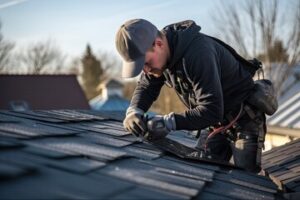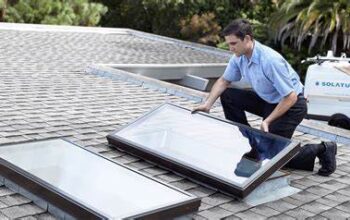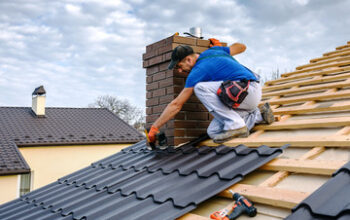Protect your home and family by addressing roof damage or leaks. Leaks can cause structural damage, while a collapsed or damaged roof exposes interior spaces to water and pests.
Roof Repair addresses a wide range of issues, from patching small leaks to reinforcing structural components and addressing underlying problems like poor ventilation or insulation. Often, roofing professionals will also recommend protective coatings to prolong the lifespan of your roof and prevent future damage. Keep reading the article below to learn more about Roof Repair.
Shingles and tiles are designed to withstand a lot of wear and tear, but they’re not infallible. High winds, hail and falling debris can damage or loosen shingles, leaving areas of your roof vulnerable to leaks and structural problems. Regular inspections and prompt repairs can prevent these issues from escalating into costly repair bills.
Shingle Cracking
Isolated shingle cracks are typically the result of wind damage, but widespread shingle cracking can signal the need for a full roof replacement. A professional roofer can help you file an insurance claim to cover the cost of a new roof or repair existing damaged shingles.
Blistering Shingles
Blistering shingles are a clear sign that your roof is overheating and deteriorating. This can lead to leaks, rot and even more serious roof repairs. To minimize blistering, check for excessive granule loss on the surface of your shingles. These granules are what shield your home from the sun’s harmful UV rays, so losing them accelerates shingle deterioration.
Missing Shingles
The number one reason for a roofing repair is missing shingles. This is usually the result of extreme weather conditions, but poor installation can also be to blame. If you notice bare spots on your roof, it’s time for a roof repair or replacement.
Damaged Roof Shingles
To repair a damaged roof shingle, first, make sure that you have all the necessary tools on hand. You’ll need a pry bar, a hammer and a utility knife. You may also want to consider wearing a safety harness when climbing the ladder. Falls are the most common cause of construction accidents, and a fall from a ladder can be particularly dangerous for someone without proper climbing equipment. Once you’re ready to begin, start by positioning the pry bar beneath the row of shingles directly above the damaged area. Slowly lift the shingle to break the sealer strip connection and expose the nails. Remove the nails that hold the shingle in place and then pull the shingle off, taking care not to damage the surrounding shingles. Once the damaged shingle is removed, slide in the replacement 3-tab shingle and nail it down with 4 roofing nails.
Leaks
Leaks can be extremely damaging to a roof if not repaired quickly. They can cause water damage within the building structure and encourage mold and mildew growth. In addition, they can lead to rot and insect infestations. To prevent these issues, it’s important to regularly inspect the roof and identify any problems early on.
One of the most common signs of a leak is water stains on the ceiling or interior walls. These stains are usually caused by water seeping through damaged shingles or flashing. The first step in locating the source of a leak is to check for other visible signs of water damage, such as discoloration or mold growth, on the interior walls and ceilings. It’s also a good idea to look for cracked or missing shingles near the area of the leak. If the stains are accompanied by black marks, this may indicate that there is more extensive damage in the area surrounding the leak.
After determining the location of the leak, it’s important to protect the area by covering it with plastic sheeting. This can be purchased at your local hardware store and is a cheap and effective option for a temporary repair. You’ll also need a putty knife, duct tape, and roofing tar or roof sealant. Measure the size of the affected area and cut your sheeting to a size that’s slightly larger than the measurement. Finally, apply the tar or roof sealant using your putty knife to create a waterproof barrier around the hole.
If you aren’t comfortable climbing up on the roof yourself, a professional can help with the repair process. However, if you decide to go it alone, make sure that you follow all roof safety guidelines like wearing sturdy boots, having someone spot you, and never going up when it’s unsafe or unstable. You’ll also want to have a ladder and some heavy weights to use as well as a pair of protective eyewear.
If you have a skylight, it’s important to keep an eye out for leaks around these areas as well. Typically, this is due to cracked or missing shingles or gaps in the flashing or caulking. In this case, it’s a good idea to use a high-quality waterproof roof sealant or caulk to fill in the gap and ensure a tight fit.
Sagging
A sagging roof is not only unsightly, but it also indicates structural issues that can lead to expensive damage in the home. Sagging occurs when the roof trusses start to weaken, leading to dips or unevenness along the ridge of the roof. This is a dangerous situation and requires immediate attention to prevent serious damage.
Identifying the cause of sagging is vital for proper repair, and it can be difficult to determine the root cause without a thorough inspection of the roof. Common causes of sagging include water damage, inadequate design and construction, and age. If left unaddressed, sagging can lead to costly and extensive structural damage throughout the home.
If you notice that your roof is starting to sag, it is crucial to contact an experienced roofing company immediately. A professional will perform a comprehensive inspection of the entire roof structure, including the attic space, to assess the extent of the problem.
The most effective way to fix a sagging roof is by reinforcing the roof rafters. This will ensure that the trusses are able to support the weight of the roof, preventing future problems with sagging and other structural damage. A qualified roofer can add braces or struts to the existing roof framing to strengthen the rafters and prevent future sagging.
It is possible to fix a sagging roof without replacing the entire roof, depending on the extent of the damage and how the repairs are conducted. The best way to avoid sagging is to keep up with regular maintenance and roof inspections. This will help homeowners to identify and address early signs of damage or wear and tear before they become more serious.
Using steel “L” channels is an easy and inexpensive method to reinforce a sagging roof without replacing it. These channels can be installed on either the interior or exterior of the roof, depending on the preference of the homeowner. The channels are drilled into the existing roof joists, and then braced with wood or metal to secure the sagging area of the roof. This will prevent further damage and help to prolong the life of the roof.
Flashing
A building’s flashing is often overlooked and undervalued, but it plays a vital role in protecting the roof structure and insulation from water damage. Installed along joints and intersections of structures like chimneys, skylights, vent pipes, and other penetrations, roof flashing creates a waterproof barrier and redirects water away from vulnerable areas. Inspecting and repairing flashing is one of the most important steps in maintaining the integrity of your roof.
Roofing professionals use various materials to construct and repair roof flashing, including copper, stainless steel, aluminum, and galvanized steel. Each material has unique properties that affect its durability and longevity. Galvanized metal, for example, is often used to replace flashing in attics, around chimneys, and on the edges of a sloping roof where it can easily become damaged.
Leaks, Water Stains, and Dampness
The most obvious indication that flashing needs repair is water stains on ceilings or walls. These can be caused by leaks that penetrate the structure of the roof, causing wood rot and damaging insulation. Left untreated, moisture can also infiltrate the attic and cause mold growth and structural damage.
Other signs of flashing problems include visible damage or deterioration, such as rust, corrosion, cracks, and gaps. These issues can result from storms, age, or improper installation. Regular inspections of your roof and its flashing are key to avoiding costly repairs down the road.
Depending on the type of flashing, you may need to replace it by cutting a new piece of metal to size and sealing it in place with roofing cement. Ensure that you follow the instructions provided by the manufacturer and use proper tools, such as metal snips and a pair of safety goggles. In addition, always work under optimal weather conditions and use sturdy ladders and scaffolding to prevent falls.
For more complex or extensive flashing repairs, it is recommended to contact a professional roofing contractor for assistance. They will be able to assess your roof and identify the correct flashing material, size, and installation method to ensure a lasting, leak-free repair.


